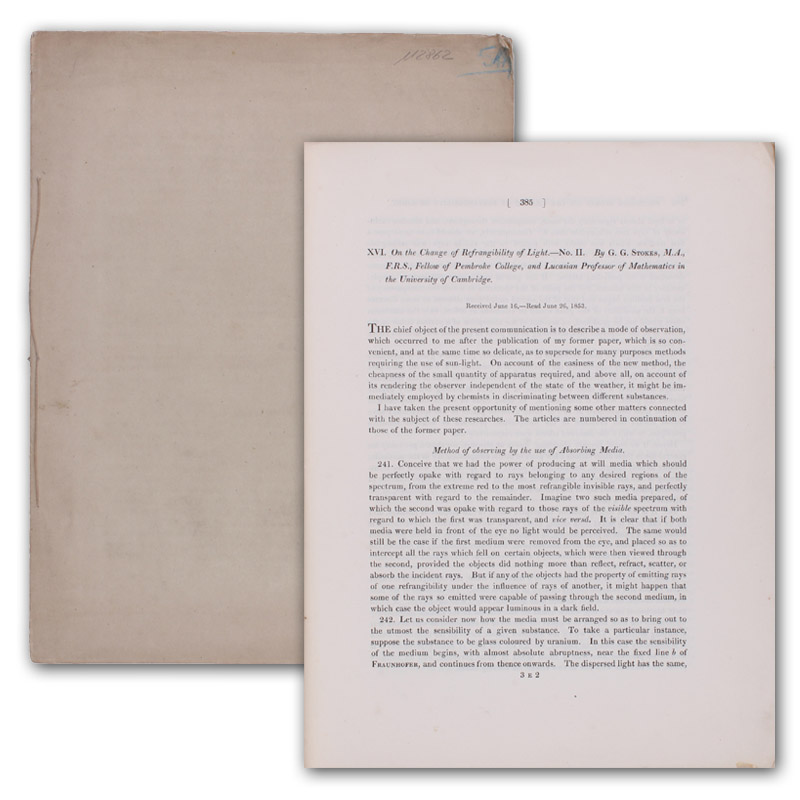112862-01
On the Change of Refrangibility of Light. No. II.
(London, Taylor & Francis, 1853). - (30 x 23 cm). SS. 385-396. Broschur der Zeit. (Sonderdruck aus: Philosophical Transactions).
Erste Ausgabe des zweiten Teils seiner bedeutenden Arbeit zur Theorie des Lichts, in der er die Entdeckung der Flourescenz beschreibt und dafür die Rumford Medaille erhielt. - "Stokes's explanation of fluorescence, published in 1852, for which the Royal Society awarded him the Rumford Medal, arose from his investigations begun the previous year into the blue color exhibited at the surface of an otherwise colorless and transparent solution of sulfate of quinine when viewed by transmitted light. Sir John Herschel had described this phenomenon in 1845, and Sir David Brewster had also examined it. Stokes, who had started by repeating some of Herschel's experiments and then had devised his own, rapidly concluded that light of a higher refrangibility, which corresponded to light of a higher frequency, produced light of lower refrangibility in the solution. Thus the invisible ultraviolet rays were absorbed in the solution to produce blue light at the surface. Stokes named this phenomenon fluorescence" (DSB). - Umschlag gering fingerfleckig, sonst gut erhalten. - DSB 13, 74
On the Change of Refrangibility of Light. No. II.
(London, Taylor & Francis, 1853). - (30 x 23 cm). SS. 385-396. Broschur der Zeit. (Sonderdruck aus: Philosophical Transactions).
Erste Ausgabe des zweiten Teils seiner bedeutenden Arbeit zur Theorie des Lichts, in der er die Entdeckung der Flourescenz beschreibt und dafür die Rumford Medaille erhielt. - "Stokes's explanation of fluorescence, published in 1852, for which the Royal Society awarded him the Rumford Medal, arose from his investigations begun the previous year into the blue color exhibited at the surface of an otherwise colorless and transparent solution of sulfate of quinine when viewed by transmitted light. Sir John Herschel had described this phenomenon in 1845, and Sir David Brewster had also examined it. Stokes, who had started by repeating some of Herschel's experiments and then had devised his own, rapidly concluded that light of a higher refrangibility, which corresponded to light of a higher frequency, produced light of lower refrangibility in the solution. Thus the invisible ultraviolet rays were absorbed in the solution to produce blue light at the surface. Stokes named this phenomenon fluorescence" (DSB). - Umschlag gering fingerfleckig, sonst gut erhalten. - DSB 13, 74
280 €

